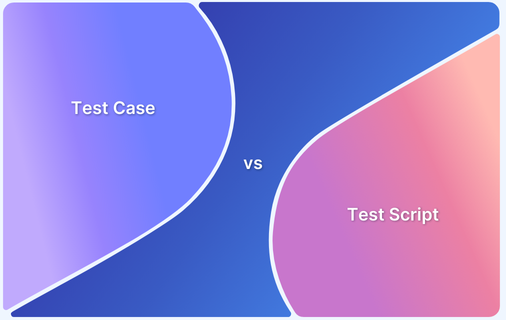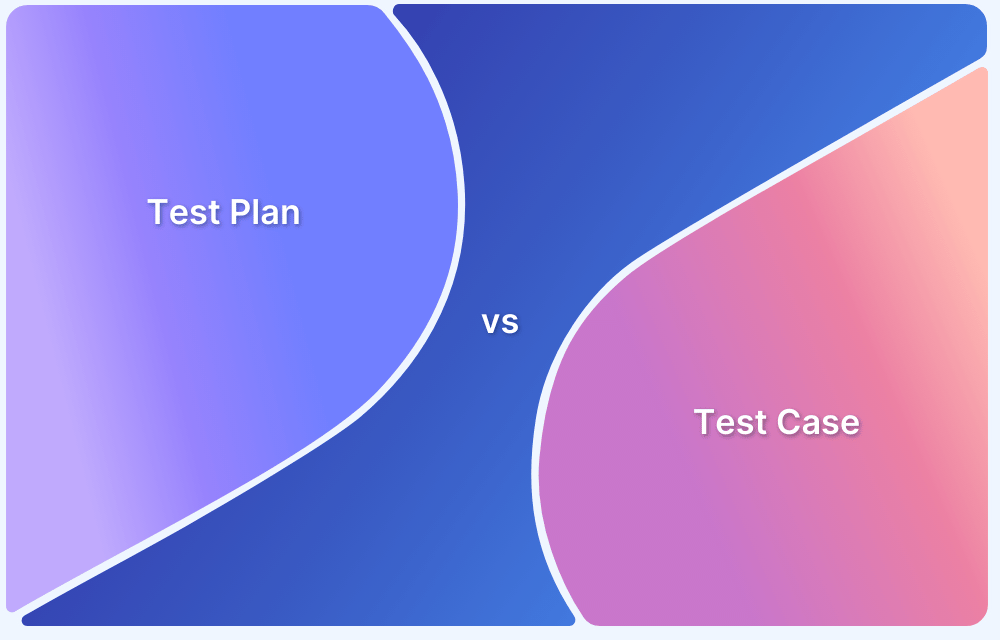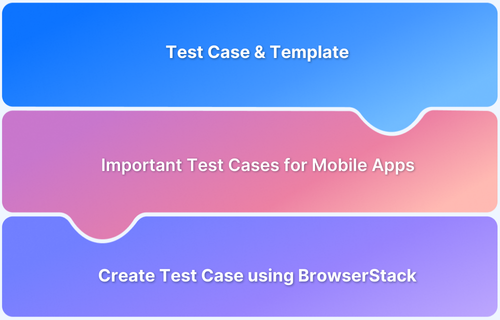Effective test case design is essential for ensuring comprehensive software testing. It involves crafting structured test cases that identify defects, verify functionality, and validate user requirement
Overview
What is Test Case Design Technique?
It is a systematic approach used to identify test conditions and create effective test cases. It ensures maximum test coverage with minimal effort by selecting the most relevant inputs, conditions, and scenarios.
Types of Test Case Design Techniques
1. Black-box Testing: Focuses on functionality without knowing the internal code. Techniques include:
- Equivalence Partitioning: Divides input data into valid and invalid partitions.
- Boundary Value Analysis: Tests edge values of input fields.
- Decision Table Testing: Maps input combinations to expected outcomes.
- State Transition Testing: Evaluates behavior based on state changes.
2. White-box Testing: Focuses on internal logic and code structure. Techniques include:
- Statement Coverage: Ensures all code statements are executed.
- Branch Coverage: Tests decision points (if-else conditions).
- Path Coverage: Verifies all possible paths through the code.
By using proven techniques, testers can optimize coverage, minimize redundancy, and enhance the overall efficiency of the testing process. This article explores key techniques to design impactful test cases.
What is Test Case Design Technique?
The Test Case Design Technique creates test cases by identifying different input combinations and outputs to evaluate software system functionality.
Techniques like Equivalence Partitioning and Boundary Value Analysis help testers cover a wide range of scenarios.
Example:
If you want to test a login feature, you might use Equivalence Partitioning to create test cases with valid usernames and passwords, which is one partition, and invalid ones will be another partition to check how the system reacts in different situations.
Importance of Test Design Techniques in Software Testing
Below are the key reasons why test design techniques in software testing are important:
- Early identification of defects: Systematically designed tests can help to uncover critical issues before release.
- Enable automation: It provides a structured framework for automating test cases, allowing for efficient execution of repetitive tests.
- Identify edge cases: By using boundary value analysis, you can identify crucial issues at the limits of input values.
- Better collaboration: Clear test documentation based on design techniques helps improve communication between testers, developers, and products.
Use Cases of Test Design Techniques
Below are the use cases of test design techniques:
- Equivalence Partitioning: This is useful for testing a large range of input values where similar behaviour is expected within a partition.
- Boundary Value Analysis: This is useful for testing the edges of input ranges (Maximum, Minimum) to identify potential error that occurs at boundaries.
- Pairwise Testing: This is useful for creating test cases by combining all possible pairs of input values from different parameters to ensure that all combinations are tested with many variables.
- Use case Testing: This is useful for focusing on user-centric scenarios by simulating real-world user interaction to ensure the system functions as expected in different contexts.
Types of Test Design Techniques
Below are the types of test design techniques:
| Test Design Technique | Description | Category |
|---|---|---|
| Equivalence Partitioning | Used to divide the input data into classes of the same values | Black Box |
| Boundary Value Analysis | Focus on testing the extreme values at the boundaries of input ranges | Black Box |
| Cause Effect Graphing | Used to create test cases to cover all possible combinations that focus on identifying cause and effect relationship between inputs and outputs | Black Box |
| Decision Coverage Branch Coverage | Used to test all possible conditions within a decision statement | White Box |
| Statement Coverage | Used to test code coverage at a basic level | White Box |
| Branch Coverage | Used to test all possible paths through decision structure | White Box |
Top Test Design Techniques in Software Testing
Test design techniques help create effective test cases, ensuring maximum coverage and improved defect detection. Below are some of the widely used techniques:
- Equivalent Class Partitioning: Divides input data into equivalent partitions to reduce the number of test cases while maintaining coverage.
- Boundary Value Analysis: Focuses on testing boundary conditions to catch errors at the edges of input ranges.
- State Transition Testing: Validates behavior based on state changes, ensuring the system transitions correctly between states.
- Pairwise Testing: Combines inputs in pairs to minimize test cases while maintaining interaction coverage between variables.
- Error Guessing: Relies on testers’ experience to identify potential error-prone areas in the application.
- Statement Coverage: Ensures every line of code is executed at least once during testing.
- Decision Coverage: Verifies all decision points in the code are tested for both true and false conditions.
- Data Flow Testing: Analyzes variable definitions, usage, and flow to detect potential anomalies.
- Path Testing: Tests all possible execution paths in the program to ensure complete logic validation.
Also Read: Code Coverage vs Test Coverage
Manage Test Cases with BrowserStack Test Management
BrowserStack Test Management is an AI-powered, unified platform designed to accelerate test case creation, execution, and automation with up to 90% faster test authoring and 50% improved coverage.
It offers seamless integrations, real-time visibility through customizable dashboards, and advanced AI agents that streamline testing workflows for both manual and automated tests.
Built for teams of all sizes, it ensures secure data handling while enabling high-quality, efficient software delivery.
Key Features of BrowserStack Test Management:
- AI-Powered Test Case Creation: Automatically generate comprehensive test cases from Product Requirement Documents (PRDs), user stories, or text prompts. AI also suggests enhancements to existing test cases, reducing manual effort significantly.
- Test Deduplication Agent: Detects exact or semantically similar test cases across your repository, providing intelligent recommendations for merging or removal to maintain a clean and efficient test suite.
- Low-Code Automated Test Authoring: Quickly convert manual test cases into low-code automated tests to accelerate automation adoption without requiring deep coding skills.
- Intelligent Test Selection Agent: Uses AI to identify and recommend the most relevant tests for execution, optimizing test runs and focusing on critical test coverage.
- Unified Test Management: Manage all manual and automated test cases in one centralized platform with full traceability from requirements to defects through seamless integrations with Jira, Azure DevOps, and more.
- Powerful Dashboard Analytics: Access customizable dashboards that offer real-time insights, track release status, monitor historical trends, and visualize testing metrics, including automation coverage.
- Shared Steps for Reusability: Mark repetitive test steps as shared within test cases to enhance reusability and save effort when creating or maintaining test cases.
- Quick Import & Custom Field Mapping: Import test cases rapidly from CSV files or existing management tools with automatic field mapping and on-the-fly custom field creation.
- AI-Powered Jira App with Two-Way Binding: Synchronize test cases and runs between BrowserStack Test Management and Jira, allowing management from both platforms with AI-driven assistance.
- Streamlined Manual and Automated Test Runs: Plan and execute test runs across manual and automated tests. Supports dynamic test inclusion and uploading automation.
- Custom Fields & Tailored Test Management: Customize form fields and result fields to adapt the platform precisely to your organizational requirements and workflows.
BrowserStack Test Management also has a free version which provides unlimited test cases, strong integrations, and live reporting for efficient test management
Conclusion
Test case design techniques are essential in software testing for building robust and comprehensive test suites. These techniques help systematically explore diverse input combinations and system states, enabling efficient identification of potential defects and ensuring software quality.
By leveraging these methods, testers can optimize test coverage while minimizing redundant efforts, resulting in more efficient testing processes.
Useful Resources for Test Case
Understanding Test Case:
- What is a Test Suite & Test Case? (with Examples)
- What is Test Case Specification?
- Fundamentals of Writing Good Test Cases
- Understanding what is UI Test Cases (with Examples)
- Test Case Vs Test Script
- Test Plan vs Test Case: Core Differences
- Use Case vs Test Case: Core Differences
- Test Case Review Process
- Captcha Test Case
- Test Case Templates with Example
Tutorials and Best Practices:
- How to Write Test Cases for Login Page
- How to optimize test cases for Continuous Integration
- How to speed up UI Test Cases
- How to run parallel test cases in TestNG
- How to write JUnit test cases
- How to write Test Cases for Gmail
- How to write Test Cases for Mobile Applications
- How Automation of Regression Test Cases can be Cost Effective
- How to Create Test Cases for Automated tests?
- How to create Selenium test cases
- How to write Test Cases in Software Testing? (with Format & Example)
- How to write Test Case in Cypress: (with testing example)
- How to run failed test cases using TestNG in Selenium Webdriver?
- How to take Screenshot of Failed Test Cases in Cucumber
- How to run JUnit 4 Test Cases in JUnit 5
- How to create and manage test cases in Jira and BrowserStack Test Management
- How to make your Selenium test cases run faster
- How to Write Test Cases for Amazon Shopping?
- Test Cases for Search Functionality
- Test Cases for ECommerce Website
- Test Cases for Facebook Login Page
- Test Case Reduction and Techniques to Follow








